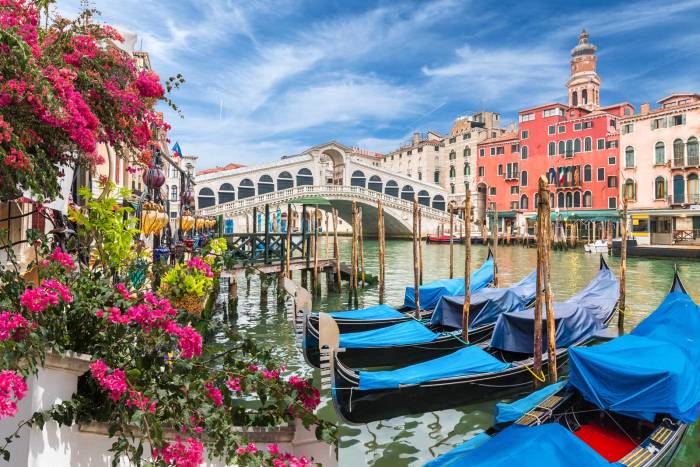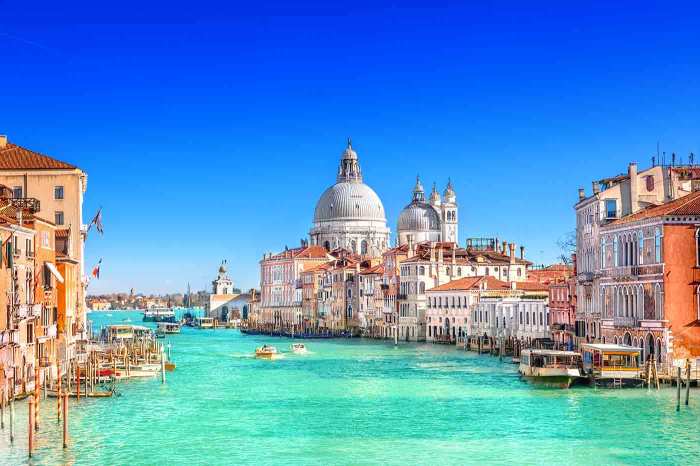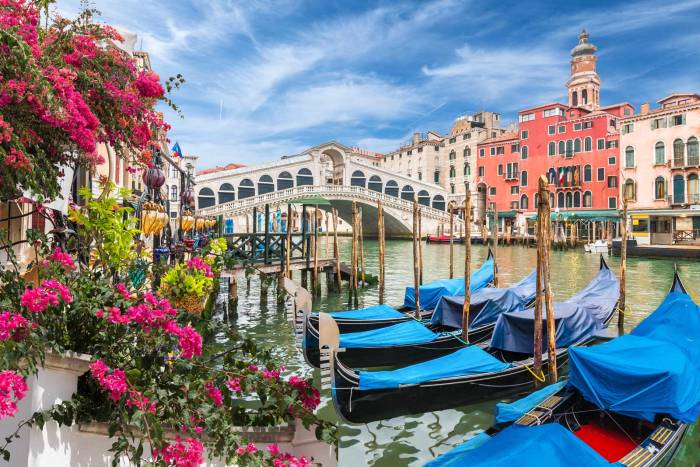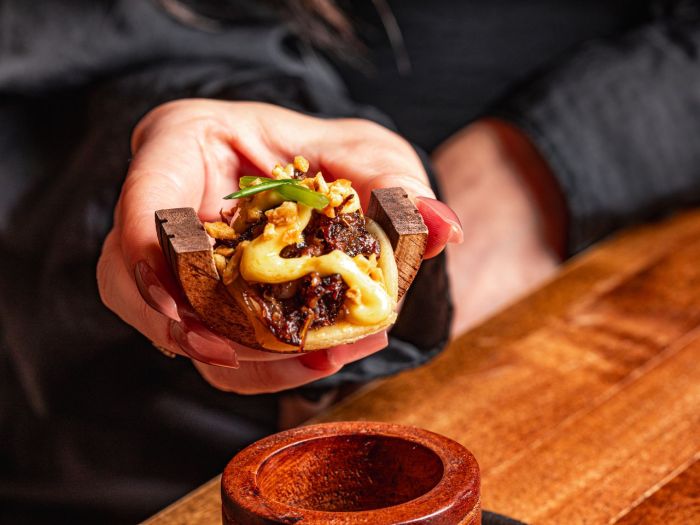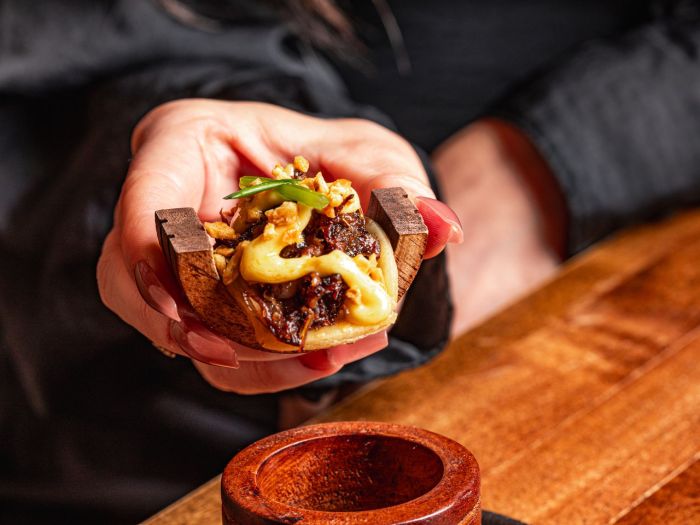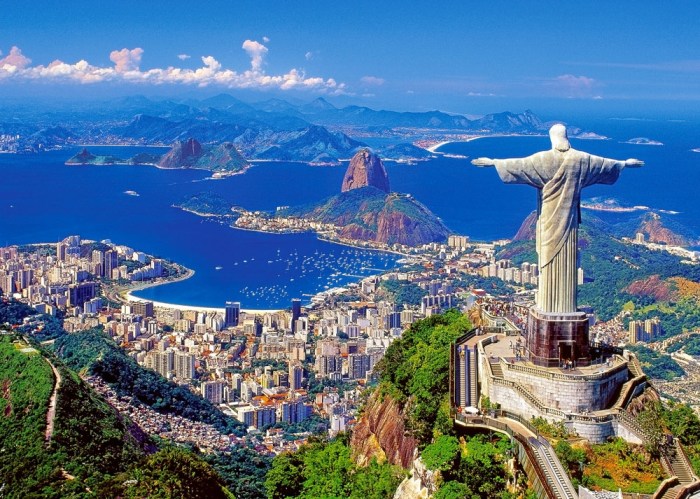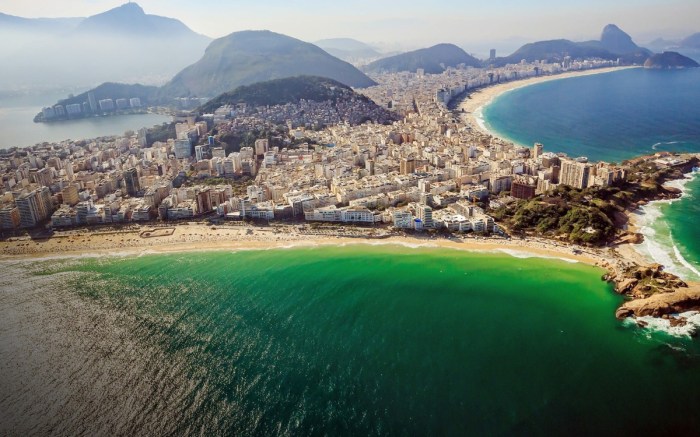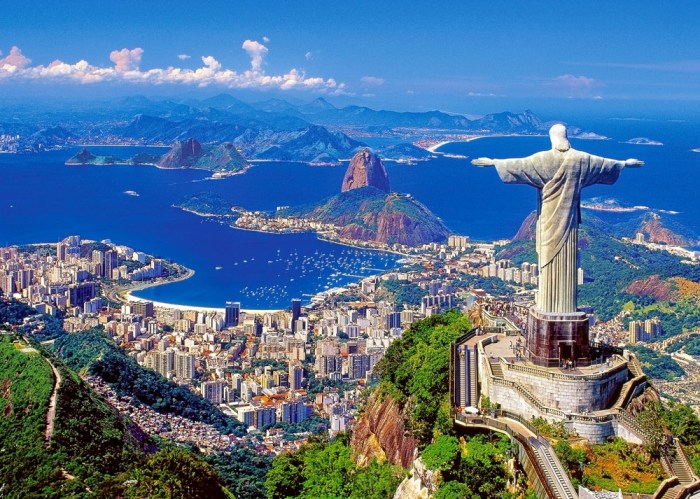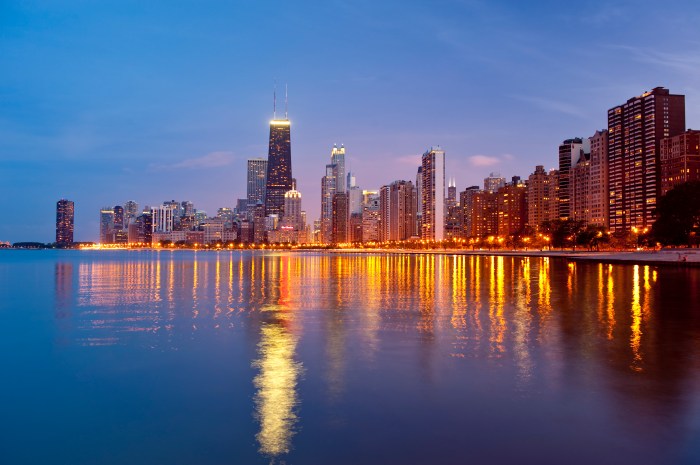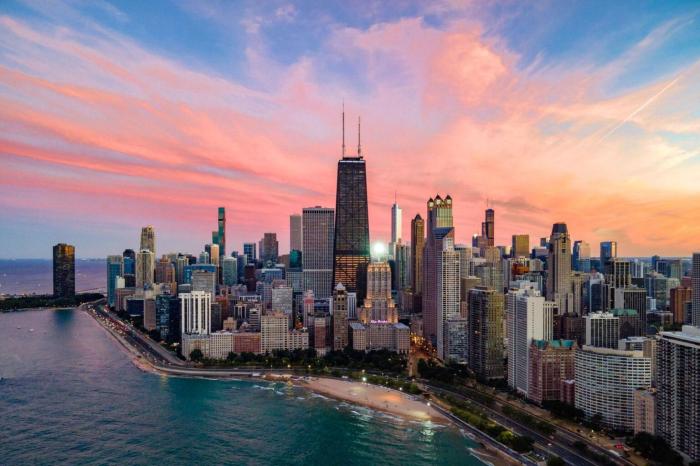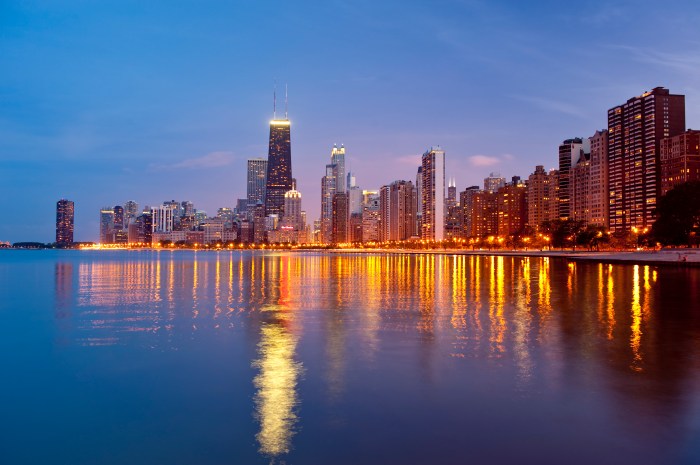Healing through travel for Black women breast cancer survivors offers a unique path to recovery. This journey delves into the specific challenges Black women face during breast cancer treatment, highlighting the importance of cultural understanding and support systems. It explores how travel can be integrated into treatment plans, focusing on mindfulness, self-care, and selecting destinations that promote healing and well-being.
We’ll examine the financial considerations, cultural sensitivity, and mental health aspects crucial for a positive travel experience.
The unique experiences and needs of Black women battling breast cancer are often overlooked. This exploration emphasizes the vital role of travel in promoting healing, empowering survivors, and fostering a sense of community. It’s a journey that goes beyond sightseeing; it’s about reclaiming strength, finding joy, and fostering self-discovery in the face of adversity.
Understanding the Experience

Navigating a breast cancer diagnosis is incredibly challenging for anyone, but Black women face unique hurdles in their journey to healing. This often stems from a complex interplay of systemic inequities, cultural factors, and societal pressures that impact access to quality healthcare and support. Understanding these specific experiences is crucial for fostering empathy and providing effective support to Black women battling this disease.The unique challenges faced by Black women with breast cancer extend beyond the physical ramifications of the disease itself.
The journey often involves navigating a healthcare system that may not adequately address their specific needs and concerns. This can manifest in disparities in diagnosis, treatment options, and access to follow-up care. Recognizing and addressing these disparities is vital for improving outcomes and fostering a more equitable approach to breast cancer care.
Unique Challenges Faced by Black Women
Black women are disproportionately affected by breast cancer, facing higher mortality rates compared to other racial groups. This disparity isn’t simply a matter of chance; it’s rooted in systemic inequities within the healthcare system. Factors such as socioeconomic status, access to quality healthcare, and historical and ongoing discrimination contribute significantly to these disparities. Research suggests that Black women are often diagnosed at later stages of the disease, potentially impacting treatment effectiveness.
Cultural and Societal Factors
Cultural and societal factors play a significant role in the healing process for Black women with breast cancer. Family and community ties often provide essential support, but cultural norms and beliefs may also influence decision-making regarding treatment options and care. Addressing these cultural factors requires sensitivity and understanding to ensure that healthcare providers can effectively connect with their patients and offer culturally appropriate support.
Historical and Systemic Inequities
A legacy of historical and systemic inequities within the healthcare system has created significant barriers for Black women seeking breast cancer care. For example, the Tuskegee Syphilis Study, a notorious experiment conducted on Black men, deeply eroded trust in the medical community. This historical trauma continues to impact how Black women interact with the healthcare system and can result in delayed diagnosis and treatment.
Moreover, implicit biases among healthcare providers can contribute to unequal access to care.
Importance of Community Support
Community support is indispensable for Black women battling breast cancer. The strength and resilience found within their communities are often critical in navigating the emotional and physical challenges of the disease. Shared experiences, empathy, and mutual encouragement can make a profound difference in the healing journey. Creating a supportive network allows for shared coping strategies and a sense of belonging.
Strategies for Building a Supportive Network
Building a supportive network for healing requires proactive effort and a commitment to fostering connections. This includes actively seeking out support groups, reaching out to family and friends, and leveraging online platforms to connect with other women facing similar experiences. Creating a space for open communication and mutual understanding within the community is paramount. It is important to acknowledge and respect the diverse needs and experiences within the Black community, tailoring support strategies to individual circumstances.
- Seek out support groups. These groups offer a space for sharing experiences, receiving encouragement, and learning coping strategies from others facing similar challenges.
- Reach out to family and friends. Lean on the support of loved ones who can offer emotional and practical assistance.
- Leverage online platforms. Online forums and social media groups can provide a sense of community and connection with other women navigating breast cancer.
- Cultivate relationships with trusted mentors. Finding a mentor who has successfully navigated the breast cancer journey can offer invaluable guidance and support.
The Role of Travel in Healing
Embarking on a journey, whether near or far, can be a powerful tool for healing, especially when facing a life-altering experience like breast cancer. Beyond the physical aspects of treatment, the emotional toll can be significant. Travel offers a unique opportunity to disconnect from the daily stressors associated with illness and treatment, fostering a sense of rejuvenation and renewed perspective.
It provides a space for self-discovery and empowerment, enabling women to reconnect with their inner strength and resilience.Travel allows for a temporary escape from the familiar, fostering emotional well-being. The change of scenery, the immersion in new cultures, and the exploration of unfamiliar landscapes can create a sense of calm and tranquility. This detachment from the routine of illness can facilitate emotional processing and healing, allowing space for reflection and introspection.
Potential Benefits of Travel for Emotional Well-being
Travel provides a unique opportunity for emotional rejuvenation. The change of scenery, exposure to new cultures, and immersion in unfamiliar environments can foster a sense of calm and tranquility. This detachment from the routine of illness can facilitate emotional processing and healing, allowing for reflection and introspection. It offers a chance to step outside the immediate challenges and focus on the present moment.
Travel as a Catalyst for Self-Discovery and Empowerment
Travel fosters a sense of self-discovery and empowerment. Stepping outside familiar comfort zones pushes boundaries and encourages personal growth. Experiencing new cultures, interacting with diverse people, and overcoming the challenges of navigating unfamiliar environments can bolster confidence and self-esteem. This process of growth and adaptation can be particularly empowering for individuals facing life-altering experiences like breast cancer.
The Importance of Mindfulness and Relaxation During Travel
Mindfulness and relaxation are crucial components of travel for healing. Incorporating these practices into the travel itinerary can enhance the therapeutic benefits of the experience. Traveling mindfully allows for a deeper connection with the present moment, fostering a sense of peace and reducing stress. This focus on the present can be particularly beneficial for individuals navigating the emotional complexities of breast cancer treatment.
Methods for Incorporating Self-Care Practices into Travel Itineraries
Planning mindful travel requires incorporating self-care into the itinerary. Pre-trip planning, including identifying relaxation techniques, can enhance the travel experience. This includes researching and booking accommodations that promote tranquility and comfort. During travel, scheduling downtime for relaxation, such as spa treatments or quiet moments in nature, can provide much-needed respite.
Framework for Integrating Mindfulness Exercises into a Travel Experience
A framework for integrating mindfulness exercises into travel experiences can significantly enhance the therapeutic benefits. One approach is to incorporate mindfulness exercises into the daily routine, such as mindful walks in nature or meditation sessions at sunrise. Using mindfulness apps or guided meditations can facilitate these exercises. Another approach involves engaging in activities that promote presence and appreciation for the surroundings, like taking the time to savor a meal or carefully observing the details of a local market.
Destination Selection and Planning
Choosing a healing journey requires careful consideration. A retreat isn’t just about the scenery; it’s about selecting a destination that resonates with your needs and supports your well-being during a challenging time. This process involves navigating various factors, from cultural relevance and accessibility to practical logistics. Understanding these nuances can significantly enhance the healing experience for Black women undergoing breast cancer treatment.
Potential Destination Categories
This section Artikels potential destinations, acknowledging the diverse needs of Black women. A holistic approach considers not only physical comfort but also emotional and cultural resonance.
- Coastal Retreats: Locations like the Outer Banks of North Carolina, or the Gulf Coast of Florida, offer a blend of natural beauty, relaxation, and access to medical facilities, if needed. The warm climate and access to beaches can provide a soothing environment.
- Mountain Getaway: Mountain resorts in states like Colorado or the Appalachian Mountains can offer serenity and breathtaking landscapes. The crisp air and tranquil environment can facilitate relaxation and introspection.
- Urban Relaxation Hubs: Cities like New Orleans, with its rich culture and culinary scene, can offer unique experiences. The vibrant atmosphere and diverse cultural offerings can provide comfort and engagement for Black women seeking to embrace their identity and connect with their community.
Destination Comparison
A comparative analysis of potential destinations helps prioritize choices. Consider these factors when evaluating potential travel destinations.
Healing through travel for Black women battling breast cancer is powerful. It’s about finding solace in new experiences, and rediscovering strength amidst the challenges. For instance, exploring the vibrant ruin pubs of Budapest’s seventh district exploring the ruin pubs of budapests seventh district could offer a unique perspective and a much-needed break from the often-overwhelming reality.
Ultimately, travel can be a profound form of therapy, fostering resilience and providing a renewed sense of self.
| Destination | Cultural Relevance | Accessibility | Cost |
|---|---|---|---|
| Outer Banks, NC | High; historical significance for Black communities. | Good; proximity to medical facilities. | Moderate; seasonal variations. |
| Colorado Mountain Resorts | Moderate; various cultural offerings. | Good; accessibility to facilities and services. | High; higher lodging and activity costs. |
| New Orleans, LA | High; rich history and cultural heritage. | Good; diverse medical options and services. | Moderate; depends on accommodations and activities. |
Travel Style Considerations
Different travel styles offer unique advantages and disadvantages for this demographic.
- Solo Retreats: These offer immense personal time and freedom. However, emotional support and companionship might be lacking. Solo trips can be incredibly beneficial for introspection and self-care, particularly during challenging times.
- Group Trips: A support system of friends or family members can offer emotional comfort and shared experiences. Group trips might involve a compromise of personal preferences, but they can foster community and camaraderie.
- Couple/Family Trips: These options prioritize shared experiences and create opportunities for bonding, while navigating potential logistics challenges and scheduling conflicts.
Accessibility and Inclusivity
A key factor in choosing a destination is its accessibility and inclusivity.
- Prioritizing Accommodations: Consider accessible accommodations, such as rooms with roll-in showers or ramps, to ensure comfort and safety. Consider destinations with diverse lodging options, accommodating varying budgets and needs.
- Cultural Sensitivity: Understanding the cultural nuances of the chosen destination can enhance the overall experience and promote inclusivity. Researching the cultural norms and customs of the area will make your stay more meaningful.
Travel Logistics
Effective planning is essential for a smooth and enjoyable trip.
- Transportation: Assess travel options, including flights, rental cars, or public transportation. Consider factors such as accessibility and time constraints when making transportation arrangements.
- Accommodations: Explore options that suit your needs and budget, ensuring they are accessible and offer amenities that promote comfort and relaxation. Look into options that cater to specific needs or preferences.
- Local Support Networks: Connecting with local support groups or organizations that cater to Black women’s needs can enhance the experience and provide crucial assistance during your journey.
Integrating Travel into Treatment
Embarking on a journey of healing, especially during breast cancer treatment, can be a powerful way to nurture well-being. Travel, when thoughtfully planned and integrated into the treatment regimen, can provide much-needed respite, reduce stress, and potentially boost the body’s natural healing processes. This section explores how to seamlessly weave travel into your treatment plan, prioritizing rest, nutrition, and stress management throughout the experience.Integrating travel into a treatment plan requires careful consideration and communication with healthcare providers.
A personalized approach is key, ensuring that the chosen destination and activities align with your physical and emotional needs, while adhering to any medical restrictions.
Incorporating Rest and Relaxation into Travel Schedule
Careful planning is essential to ensure rest and relaxation are prioritized during travel. A balanced itinerary that incorporates downtime is crucial for both physical and mental recovery. Scheduling breaks into the day allows the body to adjust to the travel environment, and to recover from any potential side effects of treatment. Consider activities like gentle walks in nature, reading, or simply relaxing in a comfortable space.
Finding solace and healing through travel is so important for Black women battling breast cancer. Packing light is key, and choosing the best solid travel toiletries is a game-changer for smooth journeys. Thankfully, there are amazing writer picks out there, like the ones found at best solid travel toiletries writer picks. These travel-friendly options help make the healing process easier and more enjoyable, especially when venturing out to new and restorative destinations.
- Pre-trip planning: Discuss the proposed travel dates and activities with your medical team to ensure compatibility with your treatment schedule and any potential side effects.
- Designated downtime: Allocate specific blocks of time for rest, relaxation, and recovery. This could include quiet evenings, midday naps, or dedicated periods for journaling or meditation.
- Accommodation considerations: Choose accommodations that offer a comfortable and supportive environment. Consider factors like accessibility, amenities for relaxation, and a calming atmosphere.
Maintaining a Healthy Diet During Travel
Maintaining a healthy diet is crucial for overall well-being, especially during treatment. Finding nutritious options while traveling can sometimes present challenges. This section focuses on strategies for maintaining a healthy diet, regardless of the travel destination.
- Pack healthy snacks: Prepare healthy snacks and meals in advance to avoid unhealthy options when on the go. Examples include fruits, vegetables, nuts, and yogurt.
- Research local markets: Explore local markets and grocery stores for fresh produce and healthy options. This helps you stay connected with local cuisine and allows for a healthier dietary intake.
- Prioritize hydration: Staying hydrated is essential for overall health. Carry a reusable water bottle and prioritize water consumption throughout the day.
Managing Potential Travel-Related Stress
Travel can sometimes introduce new stressors, particularly when facing health challenges. This section provides strategies for managing potential travel-related stress.
Finding solace and strength through travel is crucial for black women battling breast cancer. The healing power of nature is undeniable, and planning those journeys just got easier with the recent Google Maps update featuring national parks. This new update makes it easier to discover hidden gems and scenic routes for your next restorative getaway, perfectly complementing the journey of healing for black women navigating breast cancer treatment.
google maps update national parks It’s all about prioritizing self-care and finding moments of peace amidst the challenges. So, get planning and embrace the restorative power of travel.
- Prepare for potential delays: Build flexibility into your itinerary to account for unforeseen circumstances, like flight delays or unexpected events.
- Mindfulness and relaxation techniques: Incorporate mindfulness practices, deep breathing exercises, or meditation into your daily routine to manage stress and anxiety.
- Maintain a routine: Maintain a consistent sleep schedule and daily routine as much as possible to help maintain a sense of normalcy and stability.
Managing Side Effects of Treatment During Travel
Travel can sometimes exacerbate existing side effects from cancer treatment. This section highlights resources and strategies for managing these side effects.
- Medication management: Plan medication schedules and storage carefully, especially when traveling. Carry extra medication and understand local pharmacy availability.
- Communication with healthcare providers: Maintain open communication with your medical team about any changes in symptoms or side effects experienced during travel.
- Symptom-specific strategies: Consult with your doctor about strategies for managing specific side effects, like nausea, fatigue, or pain, that may arise during travel.
Cultural Considerations in Travel
Embarking on a journey for healing is a deeply personal experience, and for Black women navigating breast cancer treatment, it’s crucial to understand the multifaceted impact of cultural factors on this journey. This includes recognizing the significance of cultural sensitivity in travel destinations, which can profoundly influence the emotional and physical well-being during recovery.Cultural sensitivity in travel is not just about politeness; it’s about understanding and respecting the unique values, beliefs, and practices of the host culture.
This understanding is vital for Black women, as their experiences and needs may differ from those of other travelers, particularly in areas where cultural norms differ significantly from their own.
Importance of Cultural Sensitivity
Cultural sensitivity in travel is paramount for Black women undergoing breast cancer treatment. It goes beyond simple politeness; it’s about recognizing and respecting the unique experiences and needs that arise from a combination of their gender, race, and health status. Understanding cultural nuances allows for a more supportive and healing travel experience.
Culturally Relevant Experiences and Activities
Integrating culturally relevant experiences into a healing journey can significantly enhance the overall experience. These experiences can provide a sense of connection, belonging, and rejuvenation, which can be particularly important for Black women during a challenging time. Examples include attending cultural festivals, visiting historical sites related to the local community, or taking cooking classes to learn about regional cuisine.
- Visiting historical sites and museums can offer a deep dive into the local history and heritage, providing context and understanding. For instance, a visit to a local museum dedicated to women’s history could offer a powerful sense of empowerment and connection to other women’s struggles.
- Engaging in local art forms, like attending a traditional dance performance or participating in a pottery workshop, can be a deeply enriching experience, offering a sense of connection to the local culture and a chance to embrace creativity.
- Cooking classes focused on regional cuisine provide opportunities to connect with local culinary traditions, learning about the ingredients and methods used. This can be a fulfilling and therapeutic activity, especially if the cuisine is known for its health benefits.
Navigating Cultural Differences
Navigating cultural differences during travel requires proactive strategies for successful integration. This involves research into the specific cultural norms of the destination, practicing basic phrases in the local language, and engaging with local communities respectfully. This preparation can foster a more meaningful and positive experience.
- Thorough research about the destination’s cultural norms, etiquette, and communication styles is essential. This research can include understanding appropriate dress codes, social customs, and communication styles to avoid potential misunderstandings.
- Learning basic phrases in the local language demonstrates respect and can foster better communication. Even a few simple phrases like “hello,” “thank you,” and “excuse me” can go a long way in creating positive interactions.
- Engaging with local communities respectfully through interactions with shopkeepers, restaurant staff, or tour guides fosters a sense of belonging and enriches the travel experience.
Respecting Local Customs and Traditions
Respecting local customs and traditions is fundamental to a positive and enriching travel experience. It’s crucial to be mindful of local etiquette, dress codes, and religious practices. Showing respect for these elements fosters mutual understanding and appreciation.
- Understanding and respecting local dress codes is important to avoid causing offense or drawing unwanted attention. This can involve adhering to specific clothing norms, especially when visiting religious sites.
- Being mindful of local customs and traditions during interactions with others demonstrates respect for the local culture. This involves avoiding actions that might be considered disrespectful or inappropriate, such as public displays of affection in some cultures.
- Observing local religious practices and traditions during visits to places of worship is essential. This involves understanding and respecting the sanctity of these spaces and adhering to specific dress codes or behaviors.
Comparative Analysis of Cultural Norms
A comparative analysis of potential destinations can help in understanding the specific cultural nuances of each location. This analysis should highlight potential differences in communication styles, dress codes, and social customs.
| Destination | Communication Style | Dress Code | Social Customs |
|---|---|---|---|
| Country A | Direct and explicit | Conservative | Formal greetings |
| Country B | Indirect and nuanced | Casual | Informal interactions |
Financial Considerations and Support
Navigating breast cancer treatment is challenging enough without the added financial strain of travel. For Black women, facing systemic inequities in healthcare access and economic opportunity, the cost of travel for healing can be a significant hurdle. This section will explore the financial obstacles, available resources, and strategies for managing costs, empowering Black women to prioritize their well-being during this difficult time.The financial burdens associated with breast cancer treatment are often compounded by the necessity of travel for healing and support.
Travel for appointments, second opinions, alternative therapies, and connecting with support groups can quickly deplete savings and create financial stress, making it harder to focus on recovery. These financial pressures can disproportionately affect Black women, who often face systemic barriers to accessing adequate healthcare and financial resources.
Financial Challenges Associated with Travel
Travel for healing often requires significant financial investment. This includes airfare, accommodation, food, transportation within the destination, and potentially the cost of additional medical procedures or therapies. These expenses can quickly accumulate, especially if the travel extends beyond a few days. For those with limited financial resources, the added cost of travel can be insurmountable, potentially hindering their ability to access vital care and support.
Potential Financial Assistance Programs and Resources
Numerous organizations offer financial assistance to individuals facing healthcare challenges. These resources can alleviate the burden of travel costs and allow patients to prioritize their recovery.
- Cancer Support Organizations: Many cancer support organizations provide grants, scholarships, or financial assistance programs to help cover travel expenses for treatment and support services. Research local and national organizations dedicated to breast cancer in Black women.
- Healthcare Insurance: Review your insurance policy to understand coverage for travel-related expenses. Some plans may cover travel costs to specialist appointments or for participation in support groups. Don’t assume that coverage is automatically present; carefully review the details.
- Non-profit Organizations: Local and national non-profit organizations often have financial aid programs designed specifically for individuals facing financial hardships related to medical care, including travel costs.
- Community-Based Organizations: Reach out to community-based organizations that serve Black women and offer assistance with travel costs or resources for managing expenses.
- Government Assistance Programs: Explore potential government assistance programs, such as grants or subsidies, that might cover a portion of travel expenses. Check with local social services departments and state-level organizations for eligibility.
Strategies for Creating a Travel Budget
Developing a detailed budget is crucial to managing travel expenses effectively. A structured approach can help ensure that the costs associated with travel do not hinder the healing process.
- Prioritize Essential Expenses: Focus on the most critical expenses, such as airfare, accommodation, and necessary medical appointments. Determine which expenses are non-negotiable and allocate funds accordingly.
- Look for Affordable Accommodations: Consider a range of accommodation options to find one that fits your budget. Hostels, budget-friendly hotels, or even Airbnb alternatives can significantly reduce lodging costs.
- Explore Budget-Friendly Transportation Options: Research various transportation options, such as public transportation or ride-sharing services, to minimize travel costs within the destination.
- Plan Meals Strategically: Plan meals in advance, considering local food markets, restaurants, or grocery stores to minimize food costs. Pack some meals to reduce the need to eat out daily.
- Seek Discounts: Look for discounts and deals on airfare, accommodation, and transportation. Often, websites dedicated to travel discounts will help you find the best deals for your destination.
Importance of Travel Insurance
Travel insurance can offer a crucial layer of protection against unforeseen circumstances. It provides financial security in case of cancellations, delays, or medical emergencies during travel. Having this safety net can significantly reduce stress and anxiety.
Travel Discounts and Scholarships
Organizations may offer discounts or scholarships to specific demographics, including Black women, for travel-related expenses. This could include scholarships to attend conferences, workshops, or access specialized care. Research available options to see if you qualify.
Support for Mental and Emotional Well-being
Traveling during a challenging time like breast cancer treatment can be emotionally taxing. It’s crucial to prioritize mental and emotional well-being alongside physical healing. This involves acknowledging the potential stressors of travel, and proactively seeking support to navigate the journey with resilience and peace of mind. Addressing these needs can significantly enhance the overall travel experience and contribute to a more positive healing process.The experience of breast cancer and its treatment can significantly impact a person’s mental health.
The physical toll, emotional upheaval, and uncertainty about the future can all contribute to feelings of anxiety, stress, and even depression. Traveling, while offering a welcome respite, can introduce additional stressors. Therefore, proactive planning and preparation for emotional well-being during the journey are essential.
Importance of Addressing Mental Health During Travel, Healing through travel for black women breast cancer
Prioritizing mental health during travel is not simply an option; it’s a necessity. It allows individuals to fully appreciate the benefits of the trip, fostering a sense of calm and rejuvenation. Neglecting mental well-being can lead to increased stress, anxiety, and potentially derail the entire journey. Addressing mental health directly enhances the overall experience, allowing for better enjoyment of the destination and promoting a more positive healing trajectory.
Potential Mental Health Resources in Various Destinations
Many destinations offer a range of mental health resources. These resources can vary based on the specific location and its infrastructure. Finding a therapist, counselor, or support group before the trip can be helpful. Online searches, travel guides, and recommendations from medical professionals or support networks can be valuable tools in identifying mental health professionals and resources in the chosen destination.
Additionally, many hotels and resorts have partnerships with local mental health organizations. By pre-planning and utilizing these resources, individuals can have access to support systems should they need it.
Importance of Connecting with Support Groups During Travel
Connecting with support groups, both online and in-person, during travel can be invaluable. Sharing experiences with others facing similar challenges can provide a sense of community and validation. Support groups offer a safe space to express concerns, receive encouragement, and learn coping strategies from others who understand. This sense of shared experience can significantly reduce feelings of isolation and foster a sense of belonging.
Finding support groups specific to breast cancer or travel-related challenges can be particularly helpful.
Activities to Promote Mindfulness and Relaxation During Travel
Incorporating mindfulness and relaxation techniques into the travel schedule can significantly reduce stress and anxiety. Practices like meditation, deep breathing exercises, and yoga can be easily integrated into daily routines. Finding quiet spaces for reflection, listening to calming music, or engaging in nature walks are additional methods to promote relaxation and mental clarity. Exploring local art galleries, gardens, or historical sites can provide opportunities for quiet reflection and stress relief.
Strategies for Managing Stress and Anxiety During Travel
Travel can present unforeseen challenges that may trigger stress or anxiety. Developing coping mechanisms before departure is crucial. Planning for potential delays, having a backup plan for unexpected events, and maintaining a consistent sleep schedule can mitigate anxiety. Having a well-organized itinerary, including time for rest and relaxation, helps in managing stress. It’s important to recognize and address personal triggers and develop strategies to manage them during travel.
For example, practicing mindfulness during stressful moments or using relaxation techniques like progressive muscle relaxation.
Illustrative Examples of Journeys
Embarking on a journey during breast cancer treatment can be a powerful act of self-care, allowing for a much-needed respite and a fresh perspective. This illustrative example details a hypothetical journey designed to support healing and well-being for a Black woman undergoing breast cancer treatment. The journey emphasizes the importance of personalized experiences, cultural sensitivity, and meticulous planning.
A Hypothetical Journey for Healing
This hypothetical journey focuses on a Black woman named Aaliyah, who is undergoing breast cancer treatment. Aaliyah has always valued connecting with nature and experiencing diverse cultures. Her journey prioritizes activities that foster relaxation, rejuvenation, and connection to her heritage.
Specific Activities and Experiences
Aaliyah’s journey begins with a meticulous planning phase, encompassing destination selection, travel logistics, and financial considerations. This stage involves researching and selecting a destination with natural beauty and cultural richness. Aaliyah chooses a small coastal town in the Caribbean, known for its vibrant culture and serene beaches. The journey includes a blend of restorative activities like yoga and meditation sessions on the beach, cultural immersion activities, such as attending local craft markets and workshops, and culinary experiences focused on fresh, local cuisine.
Aaliyah also incorporates moments for reflection and journaling, allowing her to process her emotions and connect with her inner self.
Emotional Responses Throughout the Journey
Aaliyah’s emotional journey is characterized by a complex mix of emotions. Initially, there might be feelings of anxiety and uncertainty about leaving treatment, followed by a sense of relief and excitement as she embarks on the journey. During the trip, she experiences moments of profound peace and joy, particularly when engaging with nature and connecting with local communities. There might also be moments of vulnerability and introspection as she reflects on her diagnosis and treatment.
Aaliyah’s journey culminates in a sense of empowerment and resilience, fostering a deeper understanding of her strength and inner resources.
Incorporating Local Cultural Experiences
Aaliyah’s itinerary includes several activities designed to immerse her in the local culture. This involves visiting local markets, learning about traditional crafts, interacting with local artists, and attending cultural performances. These experiences allow her to connect with the community on a deeper level and appreciate the richness of the local culture. Crucially, the itinerary prioritizes cultural sensitivity and respect for local traditions.
Potential Long-Term Impact
Aaliyah’s journey is designed to leave a lasting positive impact on her healing process. The journey allows her to create positive memories, fostering a sense of hope and optimism. The experience of connecting with nature and culture provides her with a renewed sense of purpose and self-worth. The journey also builds a support network, potentially connecting her with other women who have faced similar challenges, fostering a sense of community and solidarity.
Ultimately, the journey serves as a pivotal moment in her healing process, empowering her to navigate future challenges with strength and resilience.
Key Considerations for Each Stage of the Journey
| Stage | Key Considerations |
|---|---|
| Destination Selection | Natural beauty, cultural richness, accessibility, affordability, and alignment with personal interests. |
| Travel Logistics | Transportation options, accommodation, and necessary travel documents. |
| Financial Planning | Budgeting, insurance coverage, and potential cost-saving strategies. |
| Integrating Travel with Treatment | Coordination with medical team, and adherence to treatment schedule. |
| Cultural Sensitivity | Researching local customs and traditions, respecting local norms, and learning basic phrases in the local language. |
| Emotional Well-being | Acknowledging potential anxieties and building coping mechanisms for stress management. |
Outcome Summary: Healing Through Travel For Black Women Breast Cancer

In conclusion, healing through travel for Black women facing breast cancer is a powerful approach to holistic well-being. This exploration emphasizes the importance of tailored support systems, mindful travel planning, and cultural sensitivity to create a positive and transformative experience. By understanding the unique needs of this community and providing accessible resources, we can empower Black women to navigate treatment and recovery with grace, resilience, and strength.
This journey isn’t just about visiting destinations; it’s about reclaiming control, finding empowerment, and celebrating life’s beauty amidst adversity.




